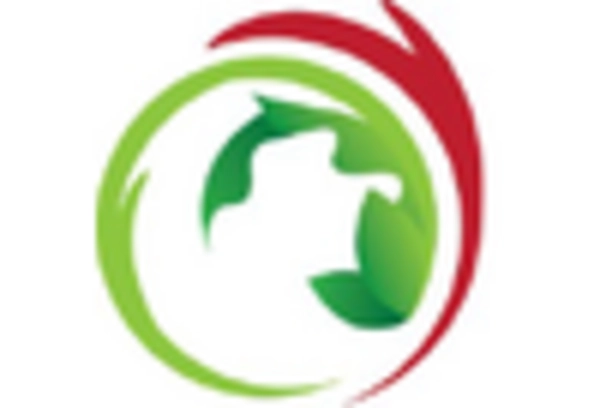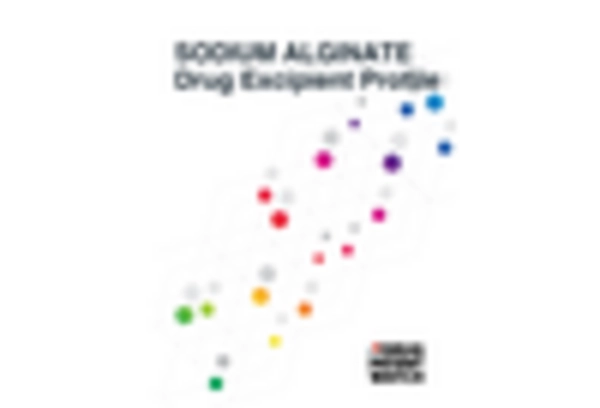Growing Interest in Nutraceuticals
The Alginic Acid Market is benefiting from the growing interest in nutraceuticals, which are food products that provide health benefits beyond basic nutrition. Alginic acid is recognized for its potential health benefits, including its role in digestive health and weight management. The increasing consumer awareness regarding health and wellness is driving the demand for alginic acid in dietary supplements and functional foods. Market analysis suggests that the nutraceutical segment could experience a growth rate of approximately 5.5% in the next few years. This trend indicates a shift towards preventive healthcare, where consumers are more inclined to incorporate alginic acid into their diets, thereby enhancing the overall growth prospects of the Alginic Acid Market.
Rising Demand in Personal Care Products
The Alginic Acid Market is experiencing a notable increase in demand from the personal care sector. Alginic acid is utilized as a thickening agent and stabilizer in various cosmetic formulations, including creams, lotions, and gels. This trend is driven by the growing consumer preference for natural and organic ingredients in personal care products. According to recent data, the personal care segment is projected to account for a substantial share of the alginic acid market, with an estimated growth rate of around 5% annually. As consumers become more conscious of the ingredients in their personal care products, the demand for alginic acid is likely to rise, further solidifying its position in the Alginic Acid Market.
Increased Utilization in Food Preservation
The Alginic Acid Market is significantly influenced by its application in food preservation. Alginic acid serves as a natural preservative and thickening agent, enhancing the texture and shelf life of various food products. The food industry is increasingly adopting alginic acid due to its ability to maintain food quality without synthetic additives. Recent statistics indicate that the food segment is expected to witness a growth rate of approximately 4.5% over the next few years. This trend is likely to be fueled by the rising consumer demand for clean-label products, which are perceived as healthier and more natural. Consequently, the utilization of alginic acid in food preservation is anticipated to bolster the overall growth of the Alginic Acid Market.
Regulatory Support for Natural Ingredients
The Alginic Acid Market is likely to benefit from increasing regulatory support for natural ingredients in various applications. Governments and regulatory bodies are promoting the use of natural additives in food, cosmetics, and pharmaceuticals, which aligns with the properties of alginic acid. This regulatory environment encourages manufacturers to adopt alginic acid as a safer alternative to synthetic additives. Recent policy changes in several regions have favored the inclusion of natural ingredients, potentially leading to a surge in demand for alginic acid. As a result, the Alginic Acid Market may witness a growth rate of around 4% as companies adapt to these regulations and consumer preferences shift towards more natural products.
Advancements in Biotechnological Applications
The Alginic Acid Market is poised for growth due to advancements in biotechnological applications. Alginic acid is increasingly being explored for its potential in drug delivery systems and tissue engineering. Research indicates that alginic acid can be utilized to create hydrogels that facilitate controlled drug release, thereby enhancing therapeutic efficacy. The biopharmaceutical sector is likely to adopt alginic acid more extensively, as it aligns with the trend towards innovative drug delivery methods. This shift could lead to a projected increase in the alginic acid market share within the biopharmaceutical industry, potentially reaching a growth rate of 6% in the coming years. Such advancements may significantly impact the Alginic Acid Market, driving further research and development.


















Leave a Comment